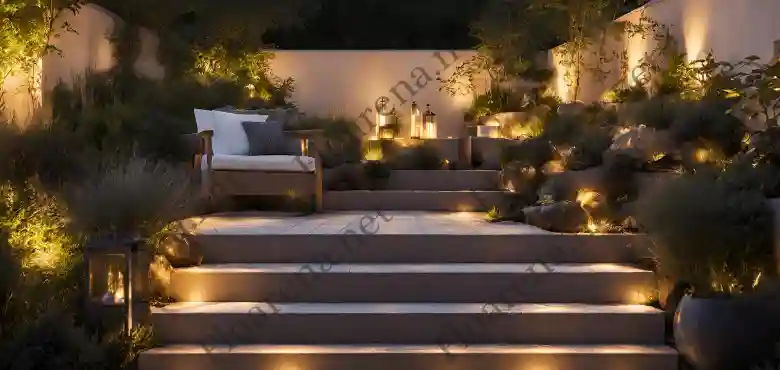Outdoor lighting serves both practical and aesthetic purposes. Proper lighting around the exterior of your home provides safety, security and ambiance. This guide will explore the different types of outside lights, factors to consider when choosing fixtures, and tips for design and placement.
Outdoor spaces become an extension of your living area. Proper lighting transforms your yard, patio or deck into a functional and inviting space for entertaining or everyday use. This comprehensive guide will explore how to choose the right outside lights to meet your needs and illuminate your outdoor oasis.
Why Proper Outdoor Lighting is Important
Outdoor lighting serves several key practical purposes:
- Safety – Pathway lighting provides illumination so you can navigate outdoor spaces safely at night. Motion-sensing security lights deter intruders and illuminate dark corners.
- Security – Bright floodlights and spotlights around the perimeter of your property keep unwanted visitors away. They also provide better visibility for outdoor security cameras.
- Task lighting – Lighting around patios, decks and gardens enables you to grill, dine and garden after sunset.
- Ambiance – Thoughtfully placed lighting transforms your outdoor living space and creates a relaxing oasis for evenings outdoors.
Beyond the functional benefits, lighting design also impacts the aesthetics and ambiance of your home’s exterior. Placement, brightness and color temperature all affect the mood and highlight architectural and landscaping features. Outdoor lighting is an investment that boosts curb appeal and functionality.
Factors to Consider When Choosing Outside Lights
Several key factors go into choosing the optimal outdoor lighting for your needs:
- Purpose – Determine if you need pathway illumination, accent lighting or bright security lighting. Your goals dictate the fixture styles and placement.
- Brightness – Measure the size of the area needing light and look for lumens (brightness) to sufficiently cover the space. Opt for multiple lower-lumen lights rather than a few harsh bright lights.
- Color Temperature – Cool white lighting in the 5000K-6000K range provides bright daylight effects. Warm white 2700K-3000K range creates a cozy ambiance.
- Energy Efficiency – Look for ENERGY STAR rated LED lights that provide 40-80% energy savings over traditional incandescent.
- Smart Lighting Capabilities – Smart bulbs and components allow you to control lighting via your phone and voice assistants.
- Style – Choose fixture styles that complement your home’s architecture and landscaping for cohesive appeal.
- Budget – Prices range widely based on the type, size and tech features. Determine how much you want to invest in your lighting design.
Prioritize your needs, then narrow down the styles and placement options to create the optimal outdoor lighting plan for your home and lifestyle.
Popular Types of Outside Lights
There are diverse options when it comes to selecting outdoor lighting fixtures. Certain types are better suited for specific uses based on how they distribute and direct light.
Pathway Lighting
Pathway lights illuminate garden paths, sidewalks, driveways and entryways. They typically use low voltage for safety. Popular options include:
- Bollard lights – Short, freestanding fixtures that aim downwards, lighting the surrounding ground. Bollard height is generally 36 inches.
- Step lights – Small lights embedded along walkways and steps to illuminate footpaths.
- Path lights – Low-voltage fixtures that shine linear light across the length of pathways.
- Deck lights – Mini recessed lights for decks and docks, or riser/stair lights on steps.
Pathway lights are essential for navigating outdoor spaces at night safely. Position them along paths and entryways to provide gentle directional lighting.
Security Lighting
Security lighting deters intruders and illuminates outdoor areas with bright light. Types include:
- Floodlights – Powerful broad-beam lights designed to flood a large area with light. Position them under eaves.
- Spotlights – Concentrated beam lights that focus on highlighting architectural or landscaping accents.
- Dusk-to-dawn lights – Bright lights triggered by motion detectors that turn on automatically at night.
- Camera lights – Integrated lights in security cameras for optimal nighttime visibility.
Strategically place security lighting around the perimeter of your property where coverage is needed most. Bright motion-activated lights also provide functionality.
Ambient Lighting
Ambient lights add overall illumination for entertaining and enjoying your landscape. Popular options include:
- Post lights – Tall lamppost-style lights mounted on tall posts that cast wide ambient light.
- Pendant lights – Decorative lights that hang from eaves and pergolas to illuminate seating areas below.
- Lanterns – Freestanding or wall-mounted fixtures with paned-glass for diffused soft lighting.
- String lights – Festive overhead strands of bulb lights to decorate trees, pergolas and patio areas.
Use ambient lighting to transform your patio or deck into a relaxing oasis, highlight trees/bushes or create a festive space.
Accent and Task Lighting
Accent and task lighting provide focused illumination for specific activities like grilling or reading outdoors at night. Types include:
- Step lights – Recessed lighting built into retaining walls and steps for illumination and accent.
- Spotlights – Narrow-beamed lights aimed at highlighting trees, architectural elements or lawn accents.
- Sconces – Wall-mounted fixtures that typically use uplighting for accenting architecture.
- Under-cabinet lights – LED strip lighting for kitchen counters and grilling areas.
Accent lighting draws attention to the best features of your landscape, while task lighting enables practical use of your outdoor spaces at night.
In-ground & In-pond Lighting
In-ground and in-pond lights provide dramatic uplighting and color effects from subtle positions.
- Well lights – Canister lights installed at ground level and focused upwards to highlight walls, fences or plantings.
- Pond lights – Waterproof LED lights that illuminate ponds and water features from within.
- Deck lights – Small recessed or post-cap lights installed on railings or around deck perimeters.
Strategically installed in-ground lighting casts a gorgeous glow to transform your yard into a welcoming nighttime environment.
Design Tips for Outside Lighting Plans
Proper placement and thoughtful design ensures your outdoor lighting works cohesively to create the desired ambiance and function. Key tips include:
- Highlight strengths – Use accent lighting to showcase trees, architectural features or landscape elements you want noticed.
- Create layers – Combine ambient, task and accent lighting to add depth and practical illumination.
- Use dims and timers – Dimmers and timers prevent harsh glare and help control energy costs.
- Hide wires – Bury low-voltage cables for pathway lighting or use wireless fixtures to avoid messy wires.
- Follow codes – Check local regulations for outdoor lighting to avoid excess light pollution.
- Choose coordinating fixtures – Repeating styles creates cohesion. Mixing and matching can work with the right elements.
- Focus on special features – Use dramatic uplighting or color-changing lights only on your most special architectural or landscaping gems.
- Light up entryways – Welcome guests with pathway illumination leading to primary entries.
With good planning and strategic fixture placement, your outdoor lighting can feel both functional and decorative. Take time mapping out the design to determine optimal post heights, wattages and aiming directions. The right lighting transforms your home into a showcase piece after dark.
Smart Outdoor Lighting Options
Smart lighting technology allows you to control and customize your outdoor lights via your smartphone and voice assistants. Integrated sensors, schedules and automation save energy while adding convenience.
- Smart switches – Replace ordinary light switches with programmable wireless remote-controlled switches.
- Smart plugs – Plug ordinary lights into outlets controlled by a smart phone app.
- Smart bulbs – LED bulbs like Philips Hue have dimming, color tuning and programmability.
- Smart sensors – Photocells, motion sensors and timers turn lights on/off based on conditions.
- Lighting control panels – All-in-one outdoor control systems to operate multiple lights in sync.
Conclusion
Conclude your journey in illuminating your outdoor space with our comprehensive guide on outside lights. From enhancing safety and security to creating a captivating ambiance, we’ve covered essential aspects like style choices, energy efficiency, and smart technology integration. Brighten up your outdoors with the perfect lighting, ensuring a beautifully lit, functional, and inviting exterior for your home.






